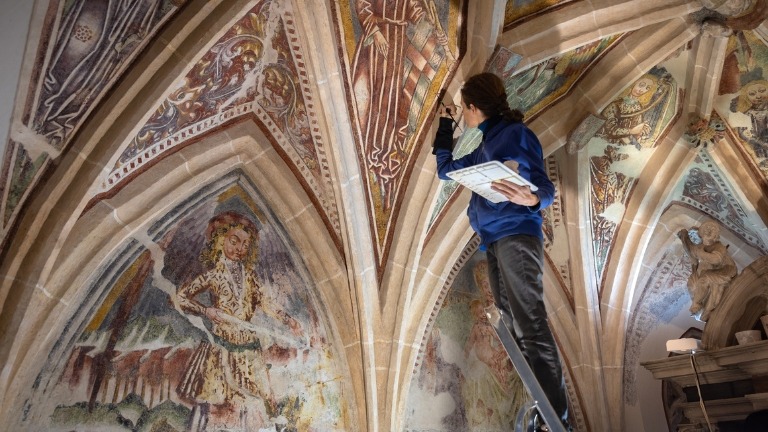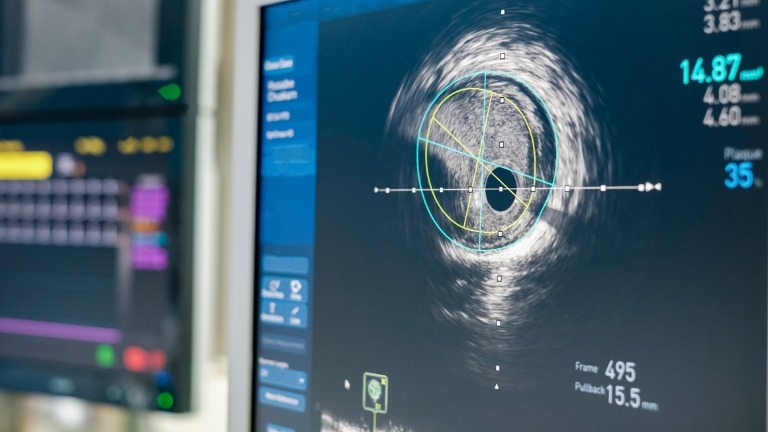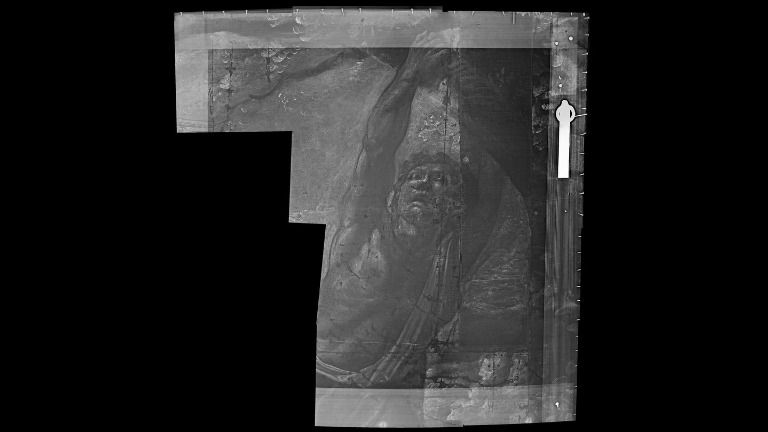Dans un souci de précision, il conviendrait de parler de bronzes riches en étain, de cuivres arséniés, ou de tumbaga (alliages d’or riches en cuivre utilisés dans l’art précolombien).
Les métaux (en particulier les alliages cuivreux comme le bronze) ne peuvent pas être datés directement. Nous devons donc chercher des marqueurs chronologiques exploitables, comme des indices techniques susceptibles de fournir des indications sur l’authenticité de l’objet. Nos laboratoires interprètent ensuite les résultats pour authentifier les matériaux.
Les laboratoires CIRAM, pour une approche globale des objets en bronze
L’approche la plus pertinente pour les objets en métal reste l’observation et l’étude de la composition chimique des alliages et de leur degré de corrosion (patine) par microscopie optique et microscopie électronique à balayage couplée à un système d’analyse élémentaire par spectroscopie de rayons X à dispersion d’énergie (MEB-EDS).
Quelles informations sont obtenues par l’analyse chimique du métal ?
Les premières informations importantes que nous livre l’examen par microscopie concernent la microstructure du métal. Une bonne compréhension de celle-ci apporte de précieux indices sur les techniques de fabrication de l’objet. Par exemple :
- La présence de dendrites caractérise une fonte,
- Des inclusions aplaties et alignées témoigneront d’un travail de martelage,
- Si cet alignement est trop parfait, il correspond à un procédé moderne de laminage.
L’examen de la structure interne peut donc révéler des indices technologiques et, par extension, contribuer à cerner la période de création de l’œuvre en question. Il en va de même de l’analyse de la composition d’un alliage.
Déterminer l’ancienneté d’un objet grâce à l’analyse de la composition d’un alliage
L’étude des concentrations en cuivre, étain, zinc, plomb, etc., si elle n’est pas suffisante pour déterminer l’ancienneté d’un objet, peut s’avérer très utile pour établir sa modernité.
Par exemple, la présence d’aluminium, de phosphore, de chrome ou de manganèse (à partir de 0,2 à 0,3 %) est autant d’indices formels de modernité. Certes, ces éléments sont naturels et ont toujours été présents sur la planète, mais on date à la fin du 19e siècle (voire même du début du 20e siècle pour le phosphore) leur utilisation raisonnée et volontaire dans la fabrication d’alliages métalliques.
En effet, si l’on se réfère aux travaux publiés par la communauté scientifique internationale, ces éléments n’ont jamais été décelés dans des métaux anciens, si ce n’est à l’état de traces (de l’ordre de 0,01 %). Par ailleurs, l’aluminium ne peut correspondre à une pollution venue du noyau de fonte par exemple, car une pollution forme des inclusions distinctes du métal, elles ne sont pas totalement dissoutes. De plus, l’aluminium n’est jamais seul dans un noyau de fonte, il est toujours associé à d’autres éléments : le silicium dans la kaolinite ; le sodium, le potassium ou le calcium dans les feldspaths. Aussi, si l’on détecte 0,5 % d’aluminium dans un laiton, on devrait également détecter du silicium, pour qu’il s’agisse d’une pollution provenant du noyau. Et pourtant, ce n’est jamais le cas ! Ce qui revient à prouver, si cela demeure encore nécessaire, que la présence d’aluminium correspond donc à l’utilisation de métaux modernes.
Le même raisonnement vaut pour le phosphore, le manganèse ou le chrome.
L’examen de la corrosion, ou « patine »
L’ultime étape de la caractérisation d’un objet métallique est l’analyse de sa corrosion.
On parle généralement de sa patine. Alors que ce terme sous-entend une approche de la surface, l’étude de la corrosion s’intéresse en particulier à la nature des produits de corrosion superficiels (la patine à proprement parler), mais également au développement des processus de corrosion à l’intérieur de l’alliage.
Pourquoi l’étude de la patine nous renseigne-t-elle sur l’ancienneté d’un objet ?
Un alliage de cuivre ou d’argent vieux de plusieurs centaines d’années aura subi de nombreuses attaques de l’environnement : l’humidité, la variation de température, le développement de micro-organismes… Ces éléments vont entraîner la dégradation du métal, sa corrosion. Parmi les signes les plus caractéristiques d’une corrosion d’origine naturelle, développée sur plusieurs siècles, nous pouvons citer par exemple :
- Une altération profonde du métal ;
- Une dégradation préférentielle des zones riches en cuivre – qui sont les plus fragiles ;
- Des produits de corrosion multiples (cuprite, azurite, malachite, atacamite, nantokite, oxyde d’étain, etc.), une association de sédiments, ou encore l’absence de chlore ou de soufre récurrent.
Par contre, si la corrosion demeure très superficielle et parallèle à la surface de l’objet, si le métal est attaqué de manière homogène ou si l’on détecte du chlore dans tous les produits de corrosion, on pourra établir que l’altération est artificielle et moderne. Cette fausse patine indiquera en conséquence que l’objet a été intentionnellement dégradé, afin de simuler son ancienneté.
Enfin, il est important de préciser que même si un objet a été fortement nettoyé et que sa patine a été enlevée, l’étude en microscopie reste possible. En effet, les processus de corrosion pénètrent la matière et laissent des indices que même une abrasion violente ne supprime pas.
Il est crucial de garder à l’esprit que l’étude de la composition chimique et du degré d’altération d’un métal fournit des indices techniques et chronologiques indirects. Il est impossible d’obtenir des informations chronologiques quantifiables sur le métal. Par conséquent, nous ne pouvons donc pas faire la différence entre un objet ayant été fabriqué il y a 2000 ans et un objet fabriqué il y a seulement 1000 ans. Ces investigations permettront seulement de se prononcer sur la compatibilité des éléments étudiés avec l’attribution présumée.
CIRAM, spécialiste de la datation et de l’authentification de vos matériaux, propose une interprétation complète. Nous partageons nos résultats et nous discutons avec vous de leur interprétation, afin de vous expliquer la pertinence des recherches, en particulier pour les objets en métal.








